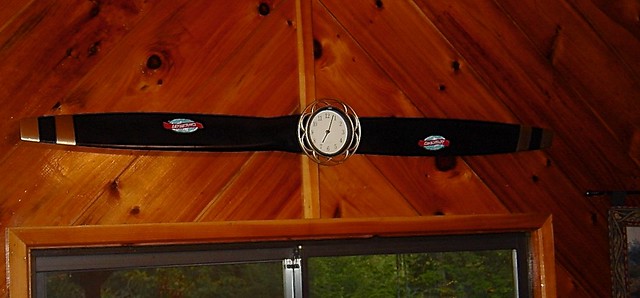clarkmueller
Pre-Flight
I ran across a photo of a prop repair that was interesting to me. This was long enough ago that I don't even remember where I took it. I know nothing about the airplane, its owner, or why it was repaired, but the area that's been filled appears to be a good ~5mm directly into the leading edge. Even with the repair, it seems like it would be a big opportunity for fatigue. Is there anyone that can tell me more about what kind of material and technique is used here?

 but then I took another look and my reaction was
but then I took another look and my reaction was  .
.
